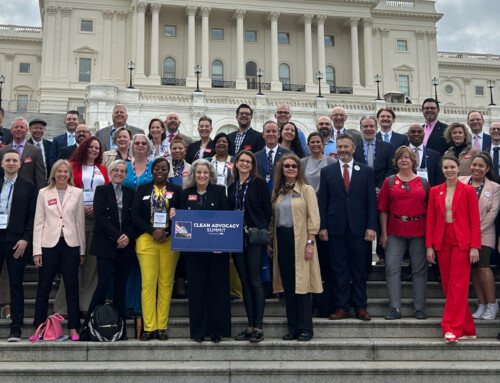ISSA Updates Summary of VOC Limits
ISSA has updated its popular resource, “Summary of State and Federal VOC Limits for Institutional and Consumer Products,” which is now freely available to ISSA members here. This complimentary resource available from ISSA summarizes the volatile organic compound (VOC) limits placed on certain household and commercial cleaning and ancillary product categories by the federal, state, and local governments.
Background
The U.S. Environmental Protection Agency (EPA), 18 states, and Washington, D.C. have issued regulations that limit the content of volatile organic compounds (VOCs) in certain household and commercial cleaning and ancillary product categories. Manufacturers and distributors are prohibited from selling covered cleaning and ancillary products that exceed the applicable VOC limitations. However, the VOC regulations are periodically revised, making compliance a challenge.
What’s New
The updated ISSA Summary of VOC Limits reflects the recent revisions made to the VOC regulations issued by New York State. New York updated its VOC regulations by adding a number of new product categories with corresponding VOC limits, and by issuing more restrictive VOC limitations for certain product categories already covered by the state’s VOC regulations.
The revised VOC limits issued by New York are summarized below and apply to the listed product categories manufactured on or after January 1, 2022 (January 1, 2023, for products required to be registered with EPA such as disinfectants and sanitizers).
- Adhesive for construction, panel, floor covering 7%
- Dual purpose air freshener/disinfectant 60%
- Anti-static product (aerosol) 80%
- Brake cleaner 10%
- Automotive windshield cleaner 35%
- Bathroom and tile cleaner (non-aerosol) 1%
- Carburetor/fuel injection cleaner 10%
- Disinfectant (aerosol) 70%
- Disinfectant (non-aerosol) 1%
- Engine degreaser (aerosol) 10%
- Floor polishes and waxes
- Flexible flooring use 1%
- Nonresilient flooring use 1%
- Wood floor wax 90%
- Furniture and maintenance products (non-aerosol) 3%
- General purpose cleaners (aerosol) 8%
- General purpose degreasers (aerosol) 10%
- Laundry starch products 5%
- Multi-purpose solvent 3%
- Nail polish remover 1%
- Oven or grill cleaner (non-aerosol) 4%
- Paint thinner 3%
- Sanitizer (aerosol) 70%
- Sanitizer (non-aerosol) 1%
California
And of course, no discussion of VOC regulations is complete without touching on the state of California. The California Air Resources Board (CARB) has embarked on another round of amendments to its VOC regulations that are expected to be finalized in 2022 with effective dates in 2023 and beyond. The following is a brief summary of the revisions proposed by CARB and currently under consideration by the state regulatory agency.
CARB has proposed several new categories of air freshener products with corresponding VOC limits as set forth below.
|
Category |
Effective Date |
New VOC Limit |
|
Manual aerosol air freshener |
1/1/23 1/1/27 |
10 5 |
|
Automatic aerosol air freshener |
1/1/23 |
30 |
|
Concentrated aerosol air freshener |
1/1/23 1/1/27 |
15 10 |
|
Total release aerosol air freshener |
1/1/23 |
25 |
In addition, CARB has proposed the creation of a new category for “Bed Bug Insecticide” and set a 15% VOC limit for aerosols and a 20% limit for all other forms. In addition, CARB has proposed to lower the VOC limit to 8% for “crawling bug insecticides.”
Lastly, CARB has proposed to sunset the 2% fragrance exemption by Dec. 31, 2021. As a consequence, products manufactured on or after Jan. 1, 2022, will not be able to rely upon the 2% fragrance exemption.
Additional Information – For additional information, please contact Bill Balek, ISSA, 847.982.0800; [email protected].

















